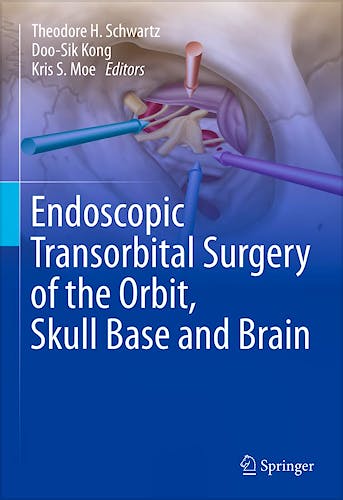

No hay productos en el carrito



Endoscopic Transorbital Surgery of the Orbit, Skull Base and Brain
Schwartz, T. — Kong, D. — Moe, K.
1ª Edición Septiembre 2024
Inglés
Tapa dura
454 pags
1278 gr
18 x 26 x 3 cm
ISBN 9783031595035
Editorial SPRINGER
LIBRO IMPRESO
-5%
176,80 €167,96 €IVA incluido
170,00 €161,50 €IVA no incluido
Recíbelo en un plazo de
2 - 3 semanas
LIBRO ELECTRÓNICO
-5%
166,39 €158,07 €IVA incluido
159,99 €151,99 €IVA no incluido
Acceso On Line
Inmediato
- Presents endoscopic transorbital surgery of the orbit, skull base and brain, a new surgical discipline
- Codifies and proliferates new approaches based on multidisciplinary surgical collaboration
- Covers anatomy, pathology, technical nuances, complications and future applications
Endoscopic transorbital surgery of the orbit, skull base and brain is a new surgical discipline that has developed over the last decade out of a collaboration between otolaryngologists, neurosurgeons and oculoplastic surgeons. Tumors and other pathology of the skull base are some of the most difficult to approach and treat for surgeons since they lie at the interface of several traditional specialties, namely the eye, the paranasal sinuses and the brain. For this reason, no single surgical specialty is fully trained to independently reach this region, which requires collaborative approaches that are technically demanding and often long and arduous procedures.
In the last decade, using the endoscopic techniques and instrumentation, otolaryngologists, oculoplastic surgeons and neurosurgeons, have together shown that the orbit can be used as a minimally disruptive corridor to reach the skull base lateral to the carotid artery as well as other areas that are difficult to access through transcranial or endonasal approaches. These approaches are now even being used to remove brain tumors involving the frontal and temporal lobes, including those that extend through the middle cranial fossa and into the posterior fossa, without visible external scars or the need for a traditional craniotomy. In addition, they have been used to clip aneurysms, treat seizure disorders, drain abscesses, repair CSF (brain fluid) leaks, and restore skull fractures – all without the additional risks, trauma and prolonged recovery of previous open surgical techniques. The literature is now demonstrating that these endoscopic procedures have comparable or improved safety compared to open surgery, while creating less collateral damage, and result in reduced patient stays.
Due to their novelty, few surgeons have acquired the necessary experience, knowledge and expertise to introduce these approaches into their practice, yet due to their safety and efficacy they are rapidly becoming a critical skill set. This is the first text of its kind to codify and proliferate these new approaches more rapidly through the country and world, appealing to otolaryngologists, oculoplastic surgeons and neurosurgeons who deal with pathology involving the skull base.
Theodore H. Schwartz, MD, David and Ursel Barnes Professor of Minimally Invasive Brain Surgery, Vice-Chairman, Clinical Research, Department of Neurosurgery, Weill Cornell Medical College, New York Presbyterian Hospital, New York, NY, USA
Doo-Sik Kong, MD, PhD, Department of Neurosurgery, Samsung Medical Center, Sungkyunkwan University School of Medicine, Seoul, South Korea
Kris S. Moe, MD, Department of Otolaryngology-Head and Neck Surgery, University of Washington School of Medicine, Seattle, WA, USA
© 2025 Axón Librería S.L.
2.149.0